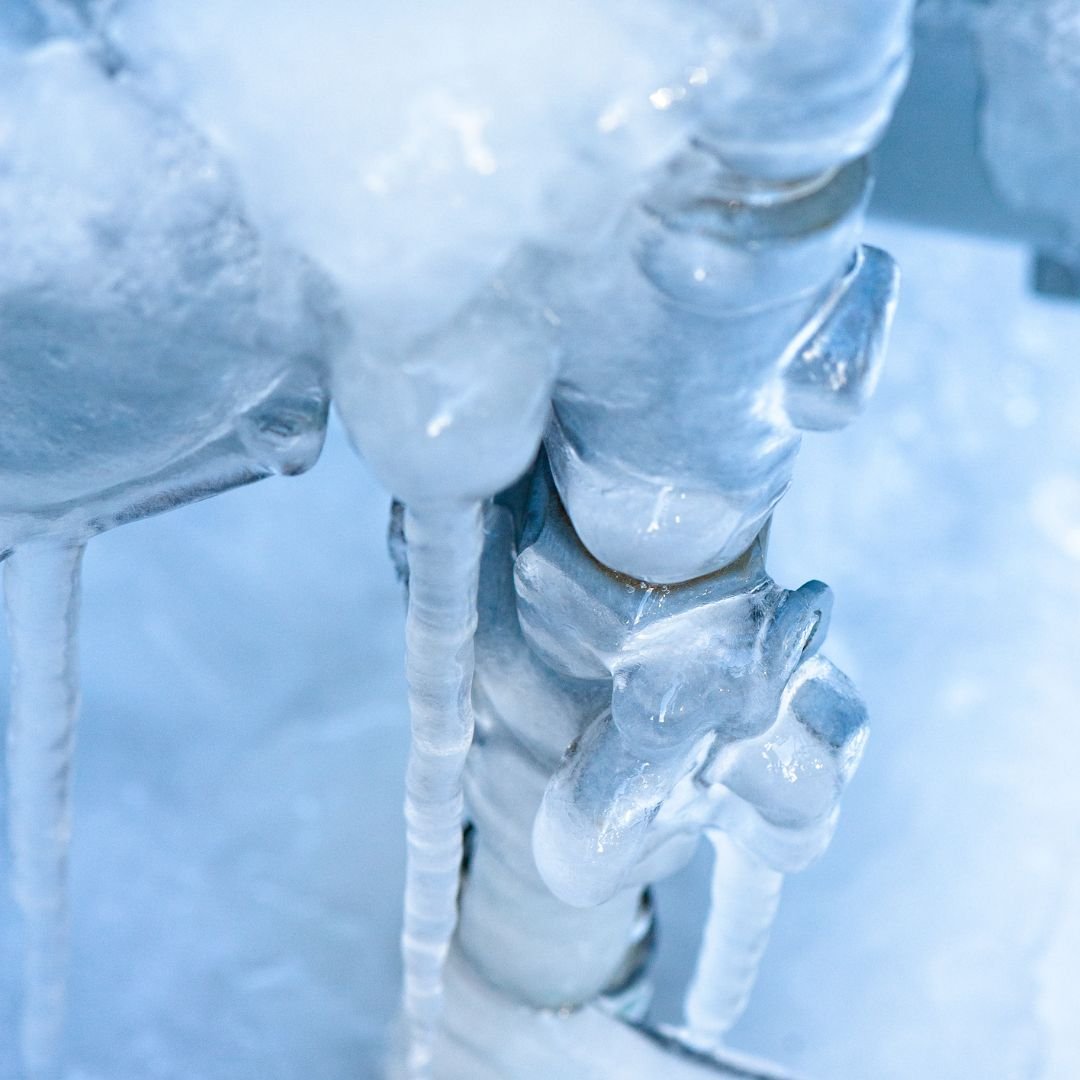How to Prepare Your Tankless Water Heater for Winter without Ruining Its Efficiency
Let’s face it—most people think prepping a tankless water heater for winter is as simple as ignoring it and hoping for the best.
Spoiler: it’s not.
Winter can wreak havoc on your system if you don’t take the right steps, and "hoping for the best" is a way to wind up with a heater that’s about as efficient as a leaky faucet. Now, if you’re looking for how to prepare your tankless water heater for winter, you’re in the right place.
What makes this process so crucial?
Because neglecting your water heater means risking frozen pipes, expensive repairs, and an efficiency drop so sharp you’ll feel it in your energy bill. No one likes unpleasant surprises in the middle of winter, especially when it’s your hot water that’s on the line.
The good news is, properly winterizing your tankless water heater is not rocket science, and it won’t break the bank—if you know what you’re doing. So, let’s get down to the steps you need to keep your heater running smoothly all season long.
Why Winterizing Your Tankless Water Heater Is Non-Negotiable
(Ignoring this is how most people end up with cold showers.)
If you think owning a tankless water heater means you’re off the hook for maintenance, think again. The idea that these systems are somehow immune to winter conditions is a myth that’ll leave you with an unpleasant reality: water heater freezing is a real risk, and when it happens, your hot water is the first thing to go. And don’t get too comfortable—ignoring winter prep might not just lead to a few cold showers; it can shorten the lifespan of your heater and fast-track you to an expensive water heater replacement.
Winterizing is so important because your heater needs to stay at peak performance even when temperatures plummet. Without proper prep, pipes can freeze, causing internal damage and tankless inefficiencies that your energy bill will happily remind you of. Plus, a tankless water heater isn’t cheap to replace or repair—skimping on winterization is like leaving your wallet outside in a snowstorm.
Common Mistakes People Make When Preparing a Tankless Water Heater for Winter
You might be doing it wrong without even knowing it. Preparing a tankless water heater for winter isn’t just about flipping a switch and calling it a day. If it were that simple, we wouldn’t be seeing so many frozen pipes and heaters gasping for efficiency when temperatures drop. So, let’s talk about the most common mistakes—each one avoidable, but often overlooked.
Skipping Insulation
Failing to insulate exposed pipes is practically an invitation for them to freeze. And once that happens, you’re not just losing heat—you’re risking the entire system. Insulating your pipes is one of the most basic ways of how to keep your tankless water heater from freezing, and trust us, skipping it is an expensive gamble. Foam pipe insulation is cheap. But replacing burst pipes? Not so much.
Forgetting Ventilation
Here’s one that sneaks up on people: ventilation. It’s not glamorous, but it’s crucial. Blocked vents mean restricted airflow, which causes your tankless water heater to work overtime—and not in the good way. More effort means less efficiency and a higher chance of breakdowns. Ensuring your venting system is clear is a small step that can save you from big headaches down the line.
Improper Draining (When Necessary)
Now, not every system needs to be drained, but when it does, half-measures won’t cut it. Any water left inside is just waiting to freeze—and when it does, it’s not going to play nice. This is where a reliable plumbing company comes in handy, because doing this incorrectly can lead to serious damage. No shortcuts here—when draining is required, it needs to be done right, or you’ll be dealing with the consequences come winter’s chill.
How to Prepare Your Tankless Water Heater for Winter like a Pro
Yes, you can do it right—and here’s how.
There’s nothing worse than waking up to cold water in the dead of winter because you skipped a few crucial steps. But don’t worry—you don’t need a degree in mechanical engineering to winterize a tankless water heater. Just a bit of know-how and attention to detail will keep your system running like a pro when temperatures drop.
Insulate All Exposed Pipes
You’re probably thinking, “How important is insulation, really?” Well, here’s a fact: insulation isn’t optional—it's mandatory. Without it, you’re practically rolling out the red carpet for frozen pipes. Foam pipe insulation is affordable, easy to install, and will save you from asking the dreaded question, "What to do if pipes freeze?" Trust me, you don’t want to find out the hard way.
Check and Clear the Venting System
Venting might not be glamorous, but it’s essential for keeping your heater efficient. Blocked vents mean restricted airflow, which can lead to overheating or an underperforming unit. So, clear out any debris and make sure everything’s sealed tight. If your heater can’t breathe, it can’t heat.
Adjust the Water Temperature
Here’s a trick you might not expect: bumping up the water temperature a notch during winter can make a big difference. It helps combat the cold water entering your system, keeping things efficient. No need to go crazy—just a slight adjustment will do the job without spiking your energy bills.
Consider a Freeze Protection Kit
If your model didn’t come with built-in freeze protection, now’s the time to invest in a kit. It’s the kind of upgrade that’ll save you from a winter headache when the temperatures drop unexpectedly. This is how the pros do it—and trust me, it’s worth it.
The Hidden Dangers of Not Winterizing Your Tankless Water Heater
Is saving five minutes now really worth the risk of thousands in repair costs later?
That’s the question you’ll be asking yourself when your tankless water heater frozen solid becomes a much bigger problem than you bargained for. Because here’s the deal: skipping the winterization steps isn’t just a minor oversight—it’s an invitation for disaster.
Let’s start with frozen pipes.
It’s not just the inconvenience of no hot water; it’s the potential for those pipes to burst wide open, leading to water damage that’ll make your head spin. And while a freeze protection kit is great, thinking it’s a substitute for actual winter prep is like wearing flip-flops in a snowstorm—sure, it covers the basics, but you’re still going to regret it when things go south.
And that’s not all. You’re also looking at skyrocketing energy bills as your heater fights against the cold to function. It’s not just a hit to your wallet—it’s a hit to the lifespan of your system. Fail to prep, and you’ll be shopping for a new heater sooner than you think.
In short, a few minutes of winterizing now will save you from the long-term pain (and cost) of a tankless water heater frozen beyond repair.
The Secret to Long-Lasting Efficiency during Winter
Want to keep your tankless water heater running like a well-oiled machine throughout winter? Here’s the golden rule: regular maintenance is the key to efficiency. Sure, tankless water heater freeze protection is crucial, but if you skip out on the routine checks, you’re basically handing efficiency over to the cold and crossing your fingers that nothing goes wrong.
Let’s be honest: neglecting maintenance might seem harmless—until it’s not. The reality is, cold weather will take its toll on your system. Regular inspections and simple upkeep (like ensuring pipes are protected from freezing) can be the difference between a water heater that hums along happily all winter and one that turns into an energy-guzzling headache.
So, what’s the secret?
Year-round care.
Don’t wait until winter to pay attention to your tankless heater. Scheduling an annual inspection not only keeps your system ready to handle the cold but also ensures every little part is functioning efficiently. And, yes, taking preventative measures, like insulating your pipes and investing in freeze protection, is an absolute no-brainer if you don’t want to risk frozen pipes wreaking havoc on your efficiency.
In short, treat your heater well, and it’ll return the favor by delivering hot water without sending your energy bills sky-high. Efficiency during winter doesn’t come from a single action—it’s a habit. Keep that in mind, and your heater will thank you by running smoothly when the temperature drops.
-
A: The time it takes for pipes to unfreeze depends on several factors, including the temperature around the pipes, the thickness of the ice, and whether any external heat source is applied. Typically, pipes can take anywhere from a few hours to a full day to unfreeze naturally. Using a heat source like a space heater or applying warm towels can speed up the process and reduce the risk of pipe damage. However, it’s crucial to address frozen pipes immediately to prevent them from bursting.
-
A: No, frozen pipes typically do not thaw on their own fast enough to prevent damage. While they may eventually thaw in warmer conditions, the delay can cause pipes to burst due to expanding ice, leading to significant water damage. It’s important to take proactive steps, such as safely applying heat to the affected area or calling a professional plumber, to thaw pipes before they cause harm.
-
A: Pipes can start to freeze at temperatures of 32°F (0°C) or below. However, the risk of freezing significantly increases when temperatures drop below 20°F (-6°C), especially for pipes that are exposed or poorly insulated. Proper insulation and tankless water heater freeze protection are crucial to prevent freezing and potential damage during cold weather.
READ MORE…
Tankless water heater repair: why your 'forever hot water' promise might be a pipe dream
Why your water heater expansion tank installation is more critical than you think
When to replace your water heater: signs, timelines, and considerations



